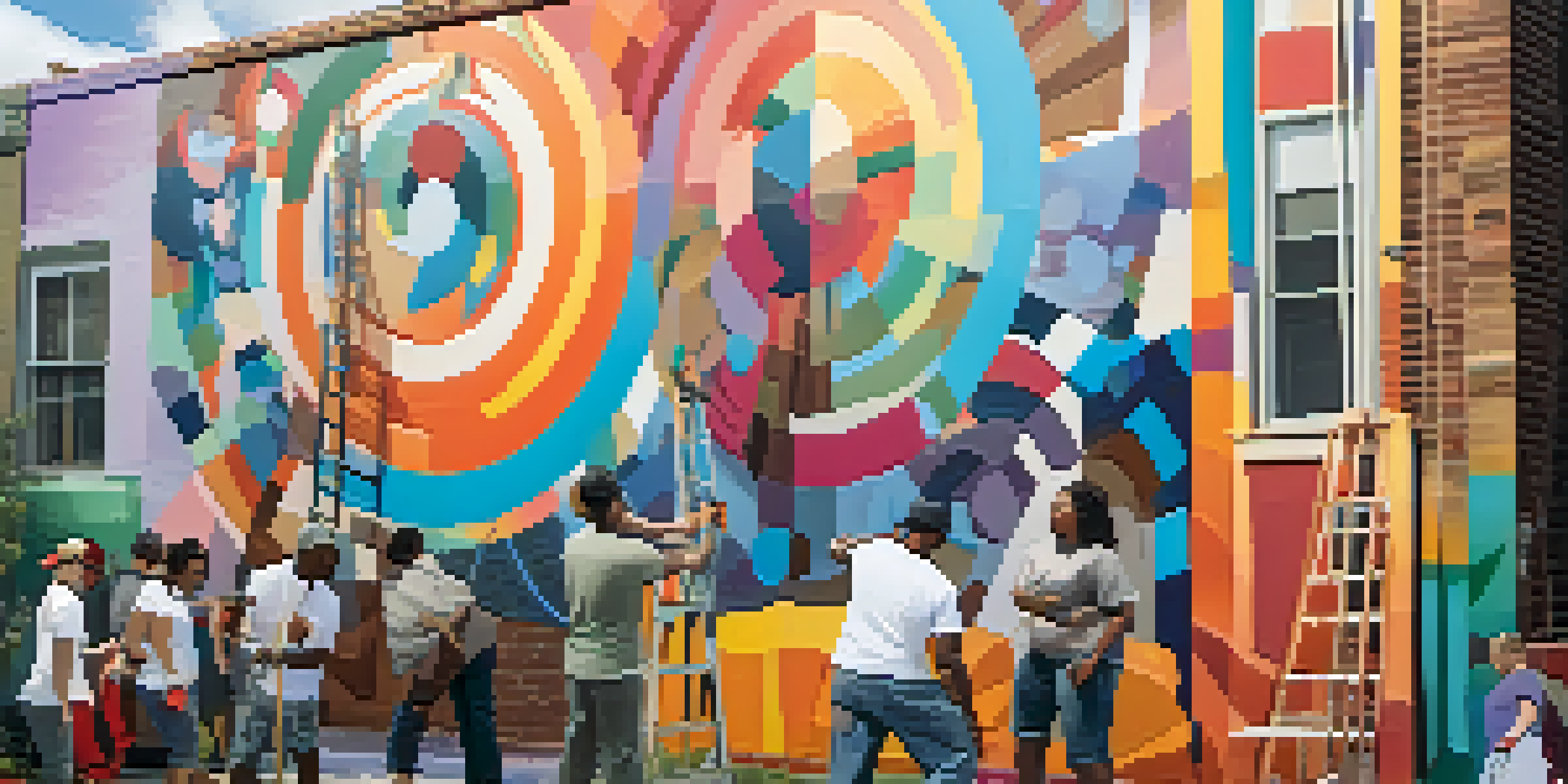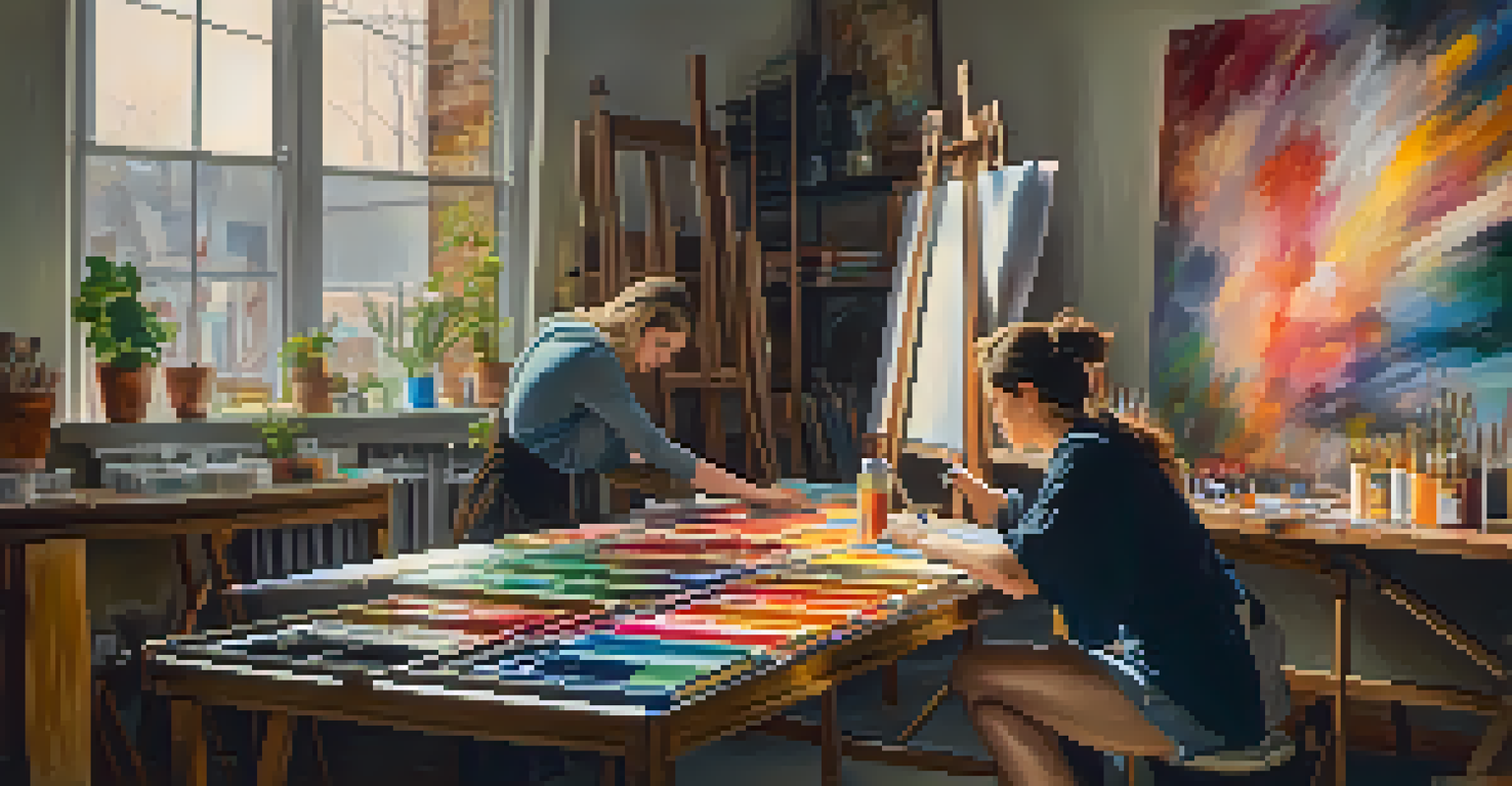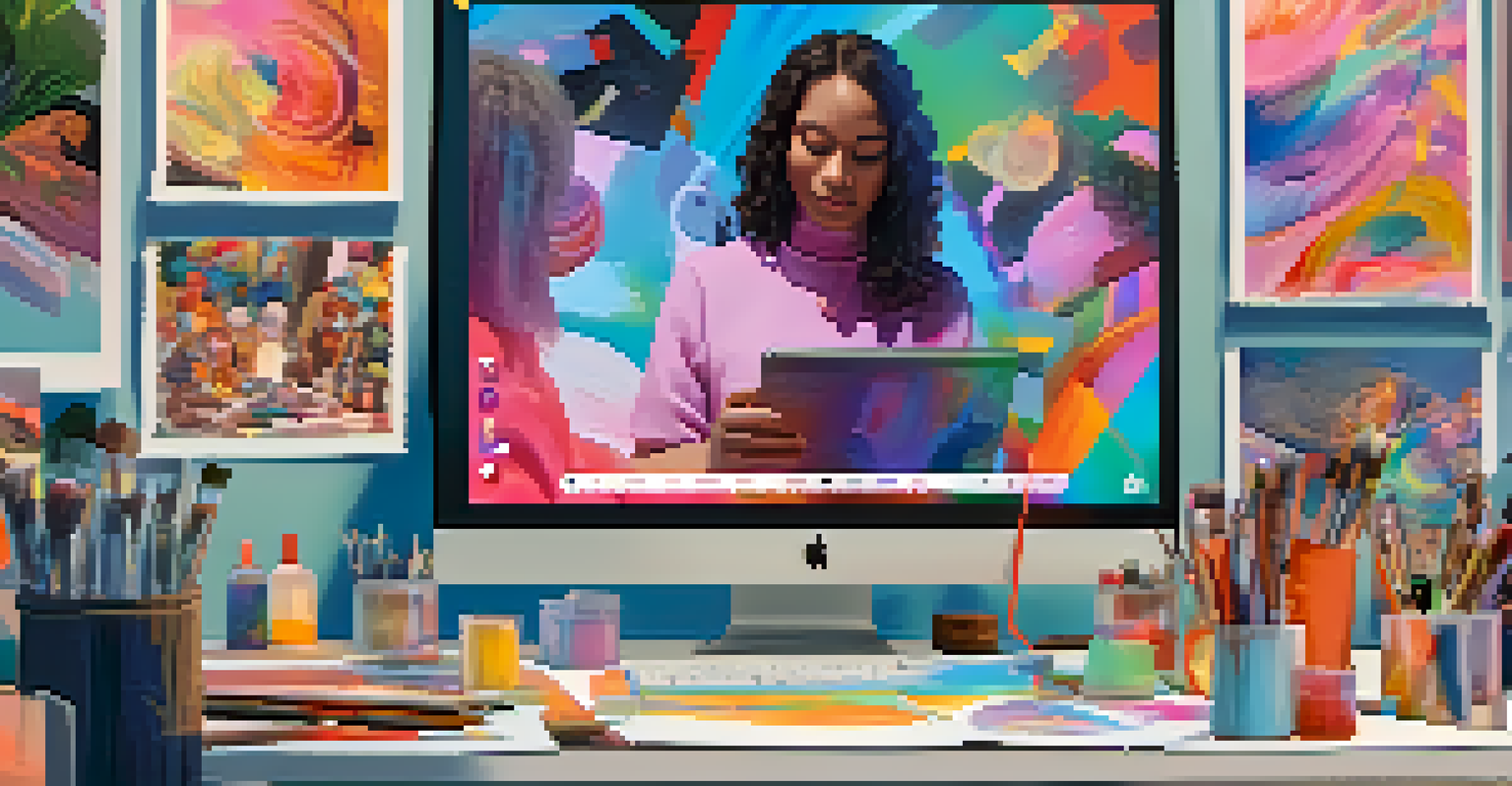Exploring Collaborative Techniques in Modern Painting Practices

The Rise of Collaborative Painting in Modern Art
In recent years, collaborative painting has emerged as a significant trend in the art world. Artists from various backgrounds are joining forces to create pieces that blend their unique styles, offering a fresh perspective. This shift reflects a broader movement towards community and shared creativity, allowing artists to break out of their individual silos.
Art is not a solitary pursuit; it is a dialogue between the artist and the world.
Collaborative projects can take many forms, from large mural festivals to intimate studio sessions. These partnerships not only enhance the final artwork but also foster camaraderie among artists. By working together, they exchange techniques and ideas, enriching their own practices and pushing artistic boundaries.
As a result, the collaborative approach has revitalized traditional painting practices, making them more accessible and engaging. Viewers are drawn to the stories behind these partnerships, which often celebrate diversity and collective expression. This evolution highlights how art can unite people, transcending individual differences.
Techniques for Successful Collaborative Painting
Successful collaborative painting requires effective communication and a shared vision. Artists must be open to discussing their ideas and preferences while remaining flexible to new influences. Establishing common goals at the outset can help avoid misunderstandings and ensure a cohesive final piece.

One effective technique is to create a mood board that outlines the project's themes, colors, and styles. This visual tool acts as a reference point, helping all participants stay aligned. By involving everyone in this initial brainstorming phase, artists can cultivate ownership and investment in the work.
Collaborative Painting Gains Popularity
Artists are increasingly joining forces to create collaborative pieces that reflect shared creativity and community.
Another important aspect is the division of roles. Whether assigning tasks based on each artist's strengths or rotating responsibilities throughout the process, clear role definition can enhance productivity. Such organization not only streamlines the workflow but also allows individuals to contribute meaningfully to the collaborative effort.
The Role of Technology in Collaborative Painting
Technology has played a pivotal role in facilitating collaborative painting practices. Digital tools enable artists to connect and collaborate across geographical boundaries, allowing for a global exchange of ideas. Platforms like Zoom and collaborative online whiteboards have made remote painting sessions more feasible than ever.
Creativity is best when it is shared. Collaboration transforms ideas into something greater than the sum of their parts.
Moreover, social media serves as both a showcase and a communication platform for collaborative projects. Artists can share their progress, receive feedback, and even engage with their audience during the creation process. This transparency not only builds community but also fosters a sense of belonging among artists and viewers alike.
In addition, technology can enhance the creative process itself. Digital painting software allows artists to experiment with different styles and techniques in real-time, making adjustments more straightforward. This adaptability encourages experimentation, leading to innovative outcomes that might not have been possible in traditional settings.
Exploring Community-Based Collaborative Projects
Community-based collaborative projects bring local artists and residents together to create public artworks. These initiatives often focus on themes relevant to the community, fostering a sense of ownership and pride among participants. By engaging with local stories and histories, artists can create pieces that resonate deeply with viewers.
One notable example is community mural projects, where artists work with residents to design and paint large-scale murals. These collaborations not only beautify neighborhoods but also address social issues, sparking conversations around identity and belonging. The process itself becomes a platform for dialogue and connection among diverse community members.
Technology Enhances Art Collaboration
Digital tools and social media facilitate collaboration across distances, allowing artists to share ideas and engage with audiences more effectively.
Such projects often culminate in vibrant artworks that serve as landmarks, transforming public spaces into living galleries. This approach not only showcases the talents of local artists but also inspires future collaborations. As communities come together, they cultivate a rich artistic culture that celebrates their unique narratives.
Art Residencies and Collaborative Opportunities
Art residencies have become vital environments for fostering collaboration among artists. These programs often invite multiple artists to live and work in a shared space, providing them with time and resources to experiment. The immersive atmosphere encourages spontaneous collaborations that can lead to unexpected and exciting outcomes.
During these residencies, artists can share techniques, critique each other's work, and engage in discussions that spark new ideas. For many, the experience serves as a catalyst for pushing their boundaries and exploring new styles. Collaborations born in these settings often carry the influence of the shared experience, resulting in unique hybrid forms.
Moreover, art residencies can help build networks and relationships that extend beyond the duration of the program. As artists connect with one another, they create lasting partnerships that may lead to future projects. These collaborative experiences contribute to a rich tapestry of artistic practice that thrives on mutual support and shared inspiration.
Challenges in Collaborative Painting and How to Overcome Them
While collaborative painting offers numerous benefits, it’s not without its challenges. Differences in artistic vision, working styles, and communication can sometimes lead to friction among participants. Navigating these complex dynamics requires patience, empathy, and a willingness to compromise.
To address these challenges, artists should prioritize open dialogue throughout the collaboration. Regular check-ins can provide a platform for discussing concerns and celebrating successes. By fostering a culture of constructive feedback, artists can work through conflicts and strengthen their partnership.
Community Projects Foster Engagement
Community-based collaborative art projects not only beautify public spaces but also address social issues, creating a sense of ownership among participants.
Establishing clear expectations from the beginning is also crucial. By outlining roles, deadlines, and individual contributions, artists can minimize misunderstandings and enhance accountability. A well-structured approach can help ensure that the collaborative process remains positive and productive, leading to a successful final artwork.
The Impact of Collaborative Art on Audience Engagement
Collaborative art practices significantly enhance audience engagement, inviting viewers to become part of the creative process. When artists work together, the resulting pieces often tell rich stories that resonate with a broader audience. This inclusive approach fosters a sense of community ownership, making viewers feel connected to the artwork.
Events like open studios or community unveilings allow audiences to witness the collaborative process firsthand. Such interactions create opportunities for dialogue between artists and viewers, deepening appreciation for the art. As audiences engage with the narrative behind the collaboration, they develop a greater understanding of the themes and messages being conveyed.

Furthermore, collaborative art can spark movements and inspire social change. When artists address communal issues through their work, they encourage audiences to reflect on their own experiences. This engagement can lead to meaningful discussions and actions, demonstrating the transformative power of art in society.